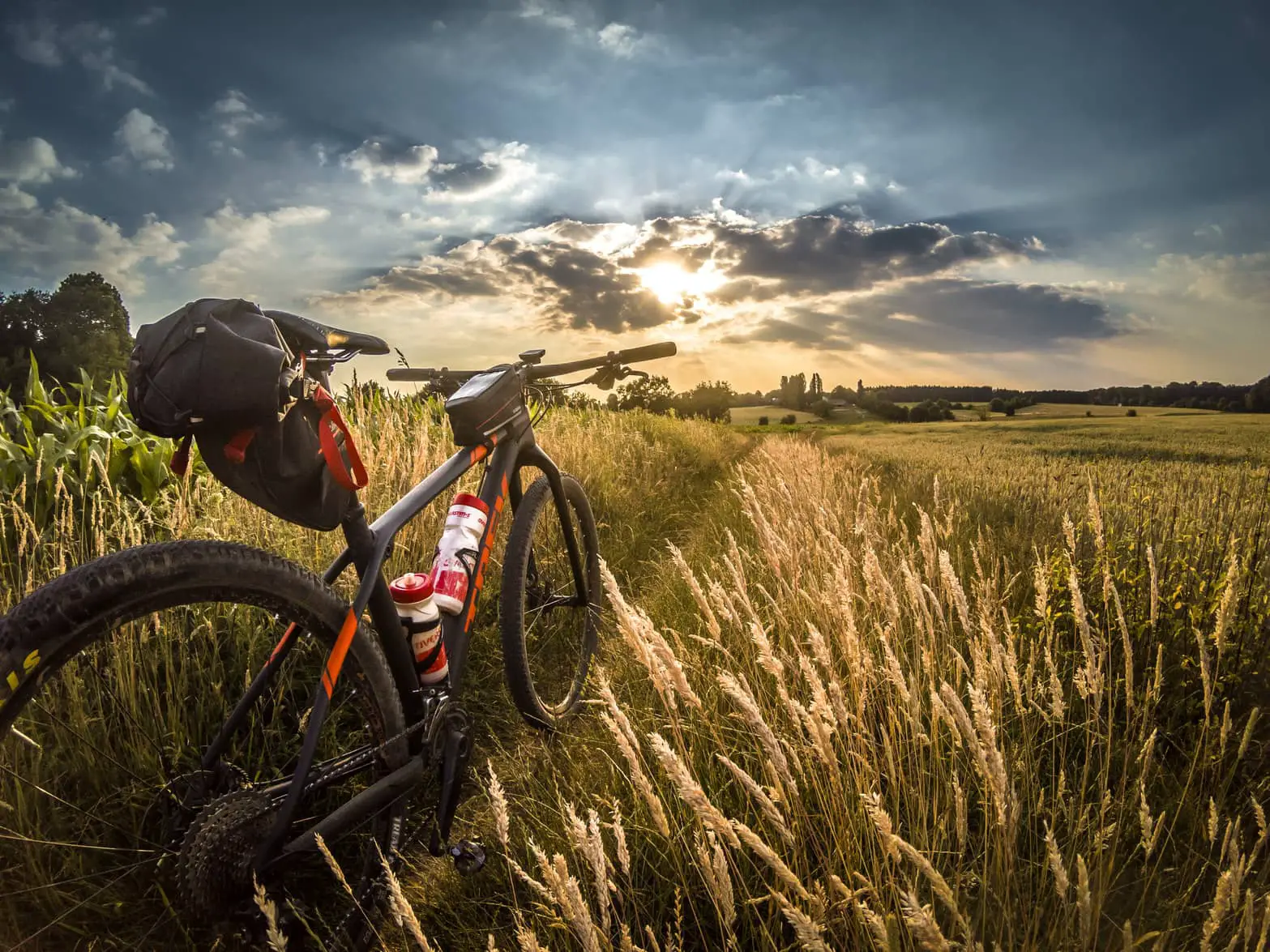Helen Jones, who recently led two LGBTQ+ heritage bike rides on the Isle of Wight shares more detail about what those taking part learnt about and the routes for those who wish to do the ride themselves. In her own words. Ed
Inspired by the OutOnAnIsland exhibition at Quay Arts (19th June to 17th July 2021), I decided to lead some bike rides visiting the locations associated with some of the characters profiled in the film being shown alongside the exhibition, Our Stories Matter.
I am a qualified ride leader for British Cycling, and lead rides so as to share my enjoyment of the bicycle as a means of transport and to see the best bits of the Island. One of the goals of BC’s leisure programme is to get more women on bikes more often and in a way that suits them, and as part of this they run Breeze rides for women (sometimes with children too).
I have run one ride on each of these routes, one mixed and one for women only and plan to repeat them during the summer. The rides will be posted on BC’s platform, using the key phrase Out On An Island.
Important to share our LGBTQ+ stories
I am grateful to OnTheWight for having mentioned the first of these rides that I led on 2nd July, which generated a flurry of comments on their Facebook Page. Some of those comments made it all too clear how important it is to share our stories, as LGBTQI+ Islanders.
The exhibition has done a great job of drawing together some fascinating recent and older history of queer folk associated with the Island, do visit if you have time before it closes.
Ride 1 – Joe and Peggy
Newport – West Cowes – Newtown – Newport
The route starts at Quay Arts in Newport, heads north along the cycleway up the Medina to West Cowes, calling in to the Classic Boat Museum at the hammerhead crane (sadly still closed for renovation), then through Cowes towards Gurnard following the Round-the-Island route to Newtown, for a refreshment break at the Town Hall, then back to Newport via Gunville, discovering some shared foot/cycleways through the town to the start. About 32km, including 230m climbing.
Joe Carstairs
Joe Carstairs was born Marion Barbara Carstairs in 1900 Mayfair. During WW1, she lied about her age to drive American Red Cross ambulances in France.
In the 1920s she set up chauffeuring service called X Garage, with a group of other female service drivers and mechanics, who would drive clients all around Europe. She inherited money from the oil business, and became an accomplished yachtswoman, winning many competitions in her yacht ‘Sonia’. She had tattoos, smoked cigars and dressed in masculine suits from Savile Row.
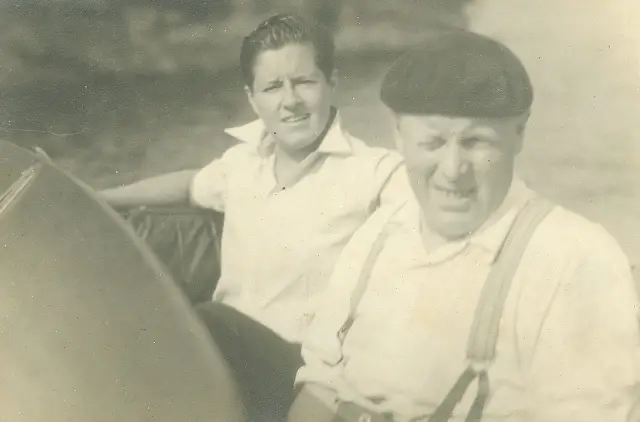
Joe made her base East Cowes. Her lovers were said to include Greta Garbo, Marlene Dietrich, Dolly Wilde and Tallulah Bankhead. A brave and wealthy woman, Joe is possibly the most well-known lesbian connected to the Isle of Wight.
In 1925 Joe met renowned boat builder Samuel Saunders and used some of her inheritance to commission him to build her a wooden 17 foot 1.5 litre hydroplane, designed by a brilliant young designer, Fred Cooper. Joe wanted a fast and dangerous vessel in which she could dominate the water. It was painted in black gloss with a single white stripe and named ‘Gwen’ after variety star Gwen Farrar, Joe’s lover. It capsized on a test run and she reversed the letters of its name calling it ‘Newg’.
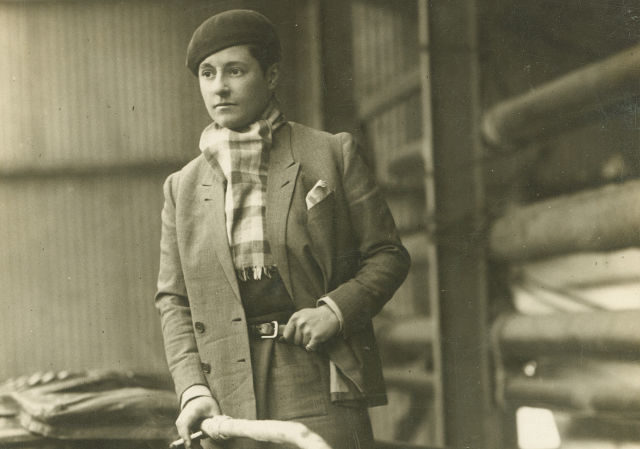
Joe won her first race in the craft on Southampton Water. Later on she set up her own boatbuilding year, the Sylvia Yard, in East Cowes. She gained a great deal of attention in her early days of powerboat racing, but the press turned against her. In one report it states:
Her vaunted pluck was beginning to be seen as a rebellion against nature. In the immediate aftermath of the war, masculine women were perceived – at worst- as contemporary curiosities but in 1928 the publication of Radclyffe Hall’s ‘The Well of Loneliness’ irrevocably sexualised them.
The heroine of Radclyffe Hall’s novel was, like Joe Carstairs a well-to-do woman who dressed in men’s clothes; like Carstairs she had served as an ambulance driver in France; and like Carstairs she had a female lover. The book was banned.
In 1934 Joe purchased an Island in the Bahamas called Whale Cay. She devoted herself to the community and protected the small island from intruders by brandishing a shotgun. She moved to Florida in 1975, where she died in 1993.
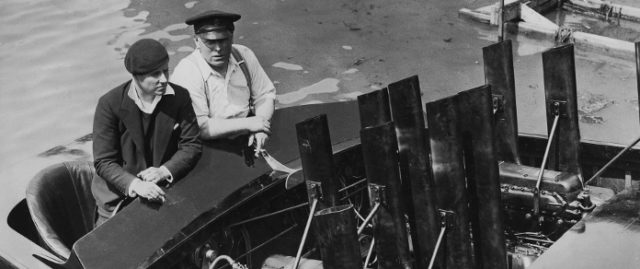
Kate Summerscale has written a biography of her, The Queen of Whale Cay. Joe Carstairs’s archive has been on display at the Classic Boat Museum Gallery in Columbine Road, East Cowes, and will, it is hoped be available to view again, once the museum has reopened.
Peggy Pollard
Peggy Pollard was the leader of a gang of unconventional young women calling themselves Ferguson’s Gang. They made many generous donations to the National Trust, including buying and repairing the Old Town Hall at Newtown.
Using pseudonyms and disguises, gang members remained anonymous during their lifetimes. Peggy, for instance, used the pseudonym Bill Stickers, but this was revealed only after her death in 1996.
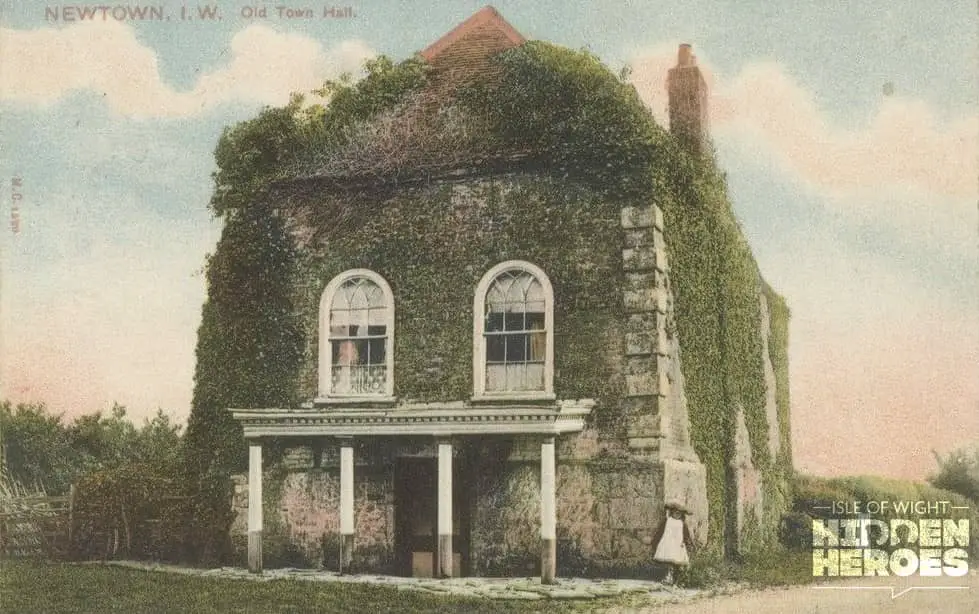
© Carisbrooke Castle Museum
One headline-grabbing occasion they triggered a bomb scare, when dressed in capes and masks, they deposited a metal pineapple at a National Trust AGM, which in fact contained money. In the early 1930s, Peggy cycled from Freshwater, where her mother lived, to Newtown, to view the dilapidated town hall building, and in 1933 suggested that it should be the second building project for Ferguson’s Gang.
The Gang concluded the Town Hall should have a use following its repair. They agreed with the National Trust that the Youth Hostel Association would make use of it, which they did from 1935 until the outbreak of war in 1939. Women slept upstairs, with the Council Chamber used as a Common Room, and the men slept downstairs, where remnants of the old kitchen and washrooms still survive.
Peggy caused quite stir at Cambridge, where she was the first woman to gain a double first in oriental languages. She was known for wearing masculine outfits and having bobbed hair; it was fashionable to blur gender boundaries at the time. She had a number of flirtations and two ‘very brief affairs’ with women, and an art fraud scheme got her involved with a group of lesbians. She also had a number of gay male friends.
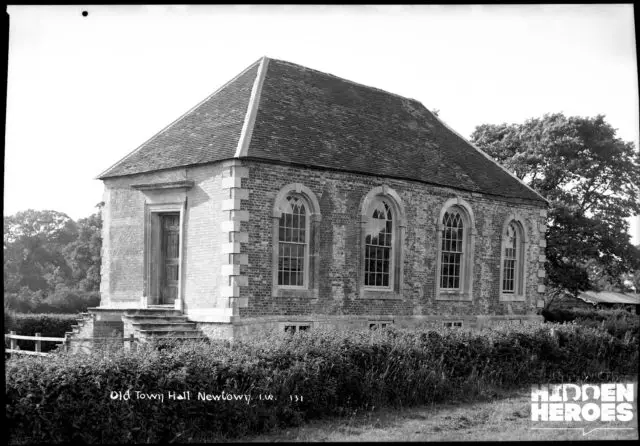
© Carisbrooke Castle Museum
Her masculine appearance attracted the attention of Arthur Elton, but it was Frank Pollard to whom she became engaged. He liked Peggy for being ‘so unlike a woman’. Despite Peggy’s relationships with women, and having an independent spirit, there was still an expectation that women of her class should marry.
Much to Peggy’s disappointment, the marriage was not consummated, and Frank seemed to have little interest in sex, despite Peggy discovering no evidence of him being gay, nor having a mistress.
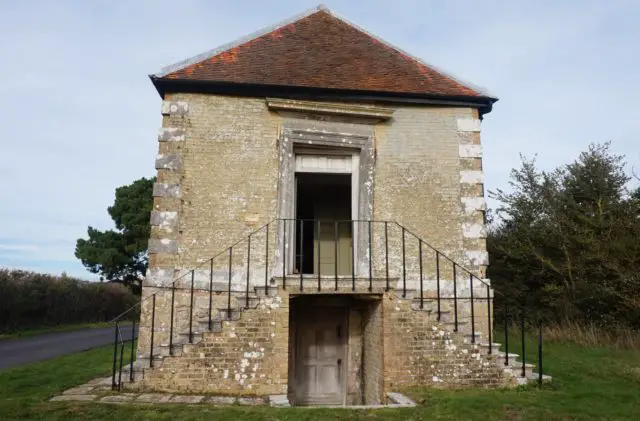
Whilst living together in Cornwall, Peggy had a passionate affair with a woman named Pauline Tweedy. She later also had her first sexual experience with a man, a Russian guitarist, whilst Frank was away on an adventure on his yacht, but it didn’t go well, and wasn’t repeated. She returned to her affair with Pauline, but Pauline’s fiance eventually put an end to it.
Ride 2 West – The Partners, Tennyson and Woolf
Brighstone – Freshwater – Mottistone – Brighstone
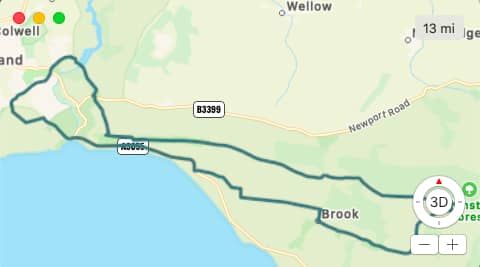
This is a mainly off-road route along the byways of Mottistone, Brook and Compton Downs, through Freshwater to Farringford, thence to Dimbola Lodge at Freshwater Bay, and back past Compton Farm and Dunsbury to Brook, and on to Mottistone Manor, back up to the start point. 21km, including 360m climbing.
Alfred Lord Tennyson
The Poet Laureate, lived on the Island for much of his later life. He rented Farringford House, near Freshwater in 1853 and then bought it in 1856. He spent winters here from 1859, until his death in 1892.
Tennyson was an ‘Apostle’ at Cambridge, that is he was a member of that intellectual discussion group, where he met his beloved friend Arthur Henry Hallam in 1829. They formed a very close relationship and travelled widely together on the continent. Tennyson was exploring Arthurian themes with his poem Lady of Shalott when he received the devastating news that Hallam had died in Vienna.
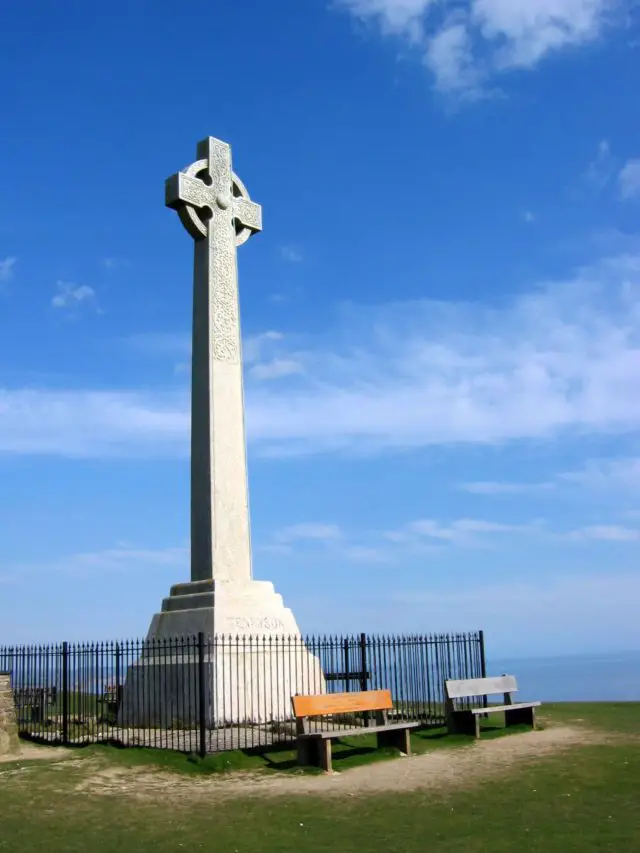
The death of Hallam deeply affected Tennyson for the rest of his life. He wrote Morte d’Arthur in response to Arthur’s death and later wrote In Memoriam A.H.H. Tennyson named his elder son Hallam. To read more about Tennyson and Hallam’s relationship we recommend Gareth Jones book ‘Alfred and Arthur: A Historic Friendship’.
The garden of Farringford, a gorgeous walled garden, is open for visits 10am-4.30pm Wed-Sat. For more details including prices check their Website. The house is currently closed for visits by the public, please check after the pandemic for reopening.
Virginia Woolf
The niece of Julia Margaret Cameron of Dimbola Lodge, quite the creative hub in the late 19th century. Virginia’s parents first met at Freshwater Bay, and in 1923 Virginia wrote her only play Freshwater, a comedy in three acts, set amidst the Victorian bohemia of Dimbola Lodge.
The plot of Freshwater revolves around the attempts by the young actress, Ellen Terry, to escape from her marriage. The play is a satire on Victorian conventions, which Woolf and the Bloomsbury group had fought to escape.

Woolf often struggled with and criticised the conventional expectations of young women in Victorian society. Woolf delivered lectures on the need for both a literal and figurative space for women writers within a literary tradition dominated by men, later published as “A Room of One’s Own”.
Woolf had also researched the life of her great-aunt, Julia Margaret Cameron, and published her findings in an essay, and in an introduction to her 1926 edition of Cameron’s photographs. Encouraged by Vita Sackville-West, Woolf concentrated on working on her two novels To The Lighthouse and Orlando.
Orlando is a queer hero whose life spans three centuries and changes gender halfway through their journey, experiencing the world both as a male and a female. It was published in 1928, shortly after Sackville-West and Woolf spent time travelling together in France. Woolf dedicated this imagined biography, to Sackville-West. Nigel Nicolson, Sackville-West’s son publicly declared:
“The effect of Vita on Virginia is all contained in Orlando, the longest and most charming love letter in literature, in which she explores Vita, weaves her in and out of the centuries, tosses her from one sex to the other, plays with her, dresses her in furs, lace and emeralds, teases her, flirts with her, drops a veil of mist around her.”
Theirs was a very public affair.
Woolf finally directed a production of Freshwater which was performed at the studio of her sister Vanessa in London in 1935. It was a gay jest in every sense and the cast made of mainly members of the Bloomsbury group. Under the play’s comedic elements, there is an exploration of both generational change and artistic freedom.
Both Cameron and Woolf fought against the class and gender dynamics of Victorianism and the play shows links to Mrs Dalloway, To The Lighthouse and the feminist lectures she would later deliver at Cambridge. Today, Dimbola Lodge, the location of Freshwater,runs as a museum showcasing Cameron’s life and work, more information at dimbola.co.uk.
The Partners
Paul Paget and John Seely, are the final two characters highlighted on these routes. Paget’s father was the Bishop of Chester and Seely’s father was General ‘Jack’ Seely, First Lord Mottistone, both significant well-connected establishment figures. Paget and Seely’s relationship started when they were studying in Cambridge in the 1920s and lasted until Seely’s death in 1963.
Lord Mottistone gave the partners their first architectural commission, renovating Mottistone Manor House. From then on the partners’ family connections helped them to establish a thriving architectural practice specializing in historic houses, (Eltham Palace) and religious architecture (working on both Lambeth Palace and Westminster Abbey.)
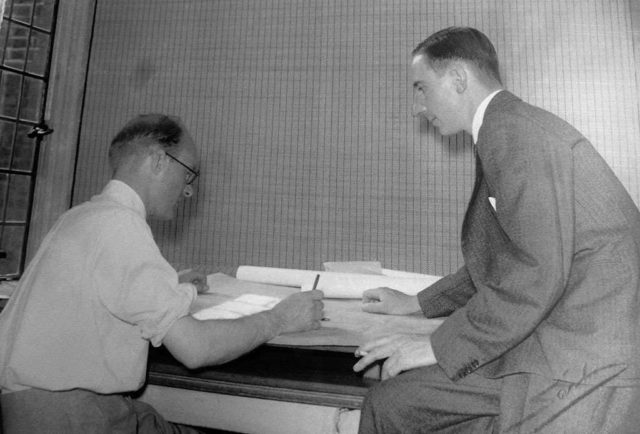
© Templewood Estate
In the grounds of Mottistone Manor is The Shack which the partners designed and provided them with a country retreat where they could be together without compromising their families. Mottistone Estate was left to the National Trust by John, Second Lord Seely, when he died in 1963. It is now owned by the National Trust and the gardens, including The Shack, are open to visits every day. For more details visit the Website.

